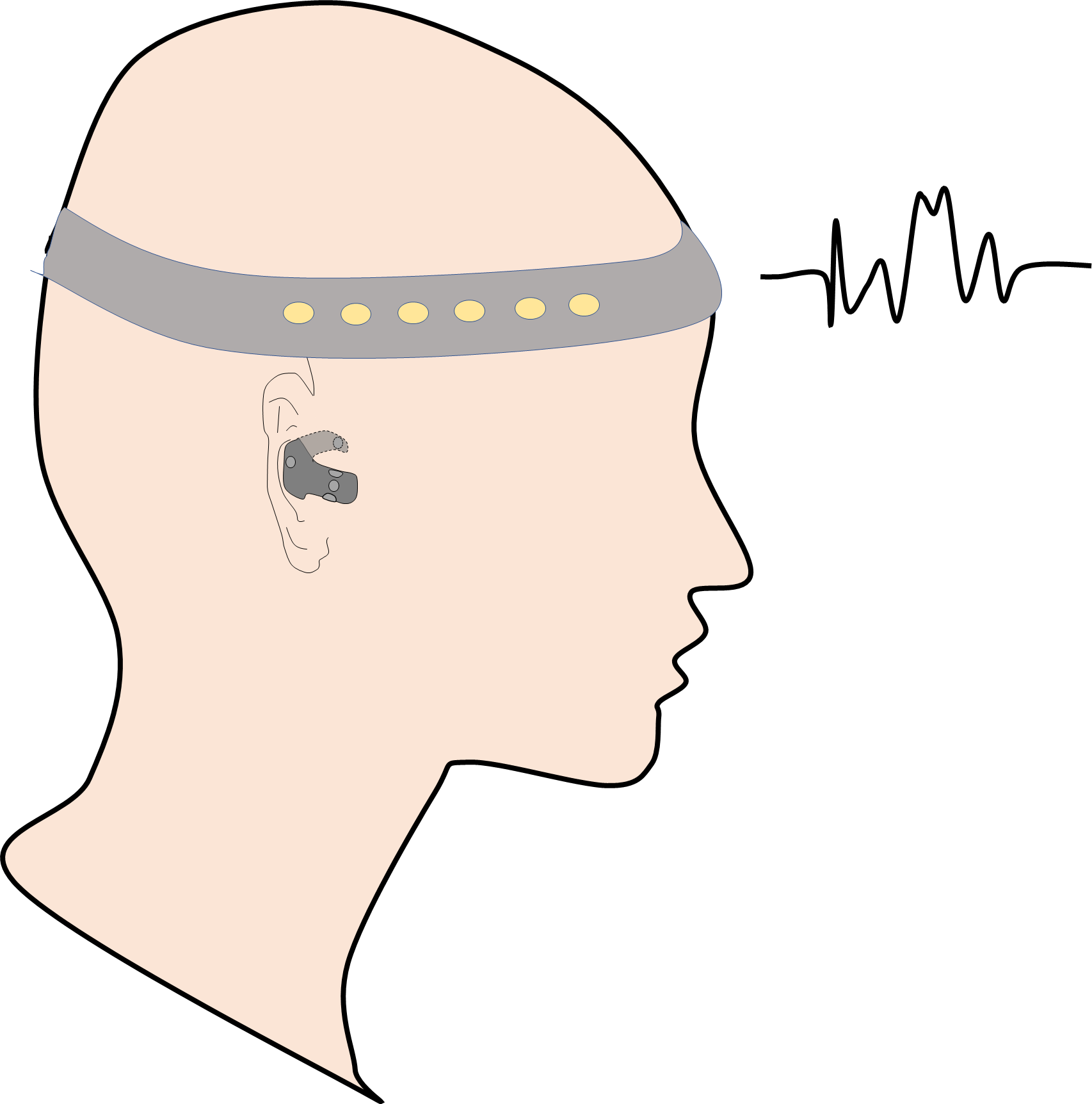SBAA561B October 2022 – October 2023 AFE4960 , AFE4960P
1 Application Brief
Application
Electroencephalograms (EEG) record spontaneous electrical activities in the brain. An EEG reflects the electrical activity of neurons under the scalp. EEG is widely used for clinical diagnosis of epileptic seizures, Alzheimer's disease, and sleep disorders. Conventional EEG instruments are bulky and uncomfortable to wear. A new wave of wearable EEG applications are opening up the possibility of continuous EEG monitoring, and are looking to extend EEG-to-consumer applications. Wearable EEG can be used in applications like epilepsy monitoring, sleep monitoring, and in determining the alertness of the user during activities like driving, work, and study. The challenges in wearable EEG include low signal levels and high contact impedance due to the use of small form-factor dry electrodes. The AFE4960 device is designed for low-power acquisition of EEG signals. The device supports acquisition on two EEG channels and an interface to up to eight electrodes. Each EEG channel can be configured to acquire a signal from any pair of electrodes. The high-input impedance, CMRR, and low power consumption makes the AFE4960 an option for wearable EEG applications. The AFE4960P additionally has a PPG signal chain which can be used for SpO2 measurements.
AFE4960
- Interface: SPI™, I2C interfaces: selectable by pin
- Package: 2.6-mm × 2.6-mm DSBGA, 0.4-mm pitch
- Supply: 1.7 V–1.9 V
- FIFO with 128-sample depth
- Internal oscillator, external clock options
- Low-noise EEG signal acquisition on two channels
- Flexible electrode interface to up to eight EEG electrodes
- Integrated bias voltage
- High input impedance, excellent CMRR
- Measurement of lead impedance
Figure 1 shows a concept wearable EEG system. Example locations for wearable EEG signal acquisition are the forehead and in or around the ear.
 Figure 1 Example of Wearable EEG
Figure 1 Example of Wearable EEGFigure 2 shows a reference schematic of the AFE4960 used to realize a wearable EEG system with interface up to eight electrodes.
 Figure 2 Wearable EEG System Using
AFE4960
Figure 2 Wearable EEG System Using
AFE4960 Figure 3 AFE4960 Signal Chain
Figure 3 AFE4960 Signal ChainFigure 3 shows the EEG signal chain in the AFE4960 interfaced to four EEG electrodes - S1, S2, S3, and BIAS. Use the input switch matrix to construct the two EEG channels as:
EEG Channel 1 = (S1 – S3);
EEG Channel 2 = (S2 – S3).
The RLD switch matrix can be used to connect the output of the RLD amplifier to the BIAS electrode. The RLD amplifier can be configured either in feedback or in unity gain mode to drive 0.9 V on the BIAS electrode.
Table 1 shows the AFE4960 specifications for a wearable EEG system.
| Parameter | AFE4960 | Comments |
|---|---|---|
| Multiple EEG electrodes | Up to 8 | |
| Multiple EEG channels | 2 | |
| Low input referred noise | 2.7 μVpp | 70-Hz bandwidth |
| High sampling rate | 1.33 kSPS | Programmable sampling rate |
| Low power consumption | 550 μW/ch | At maximum sampling rate |